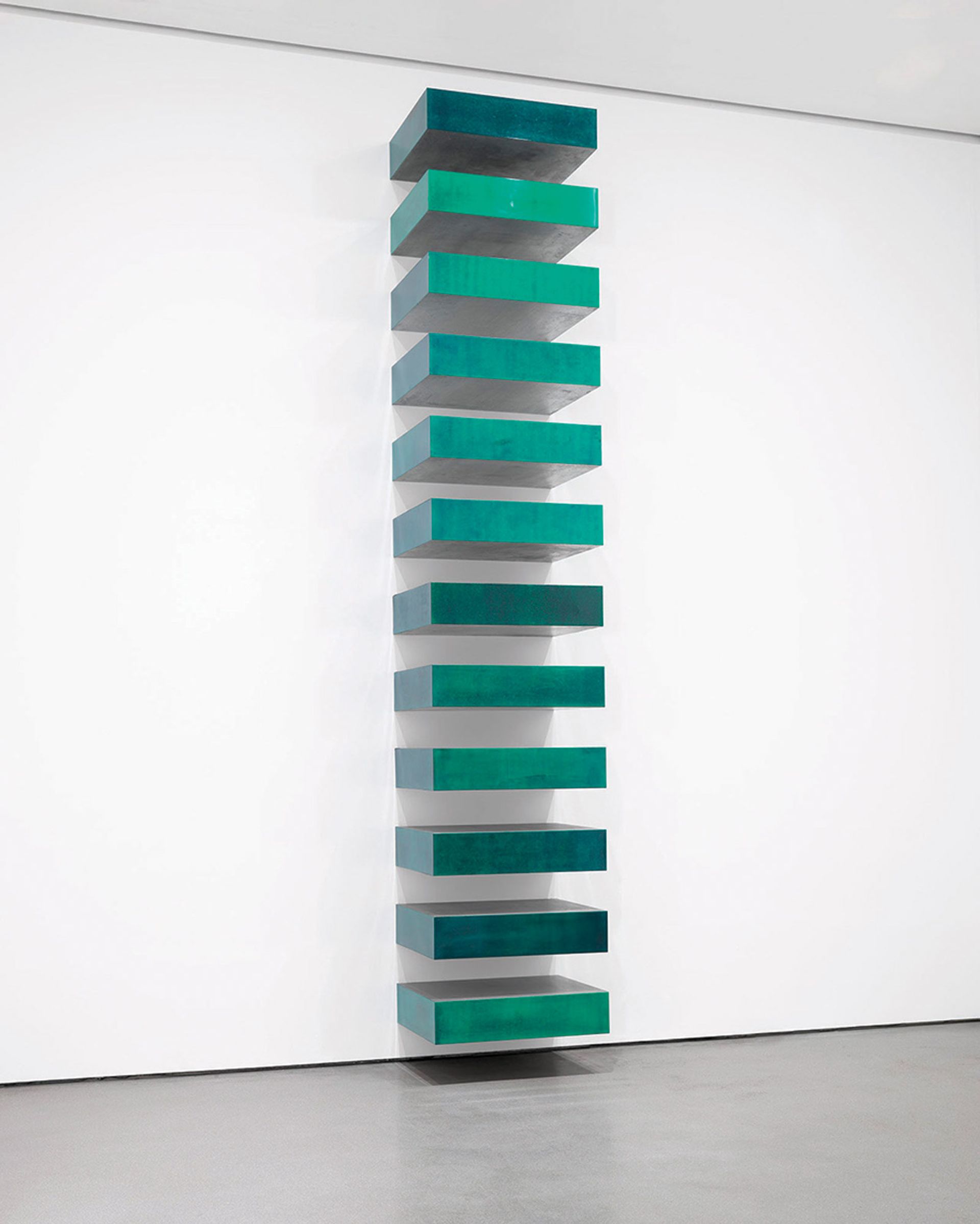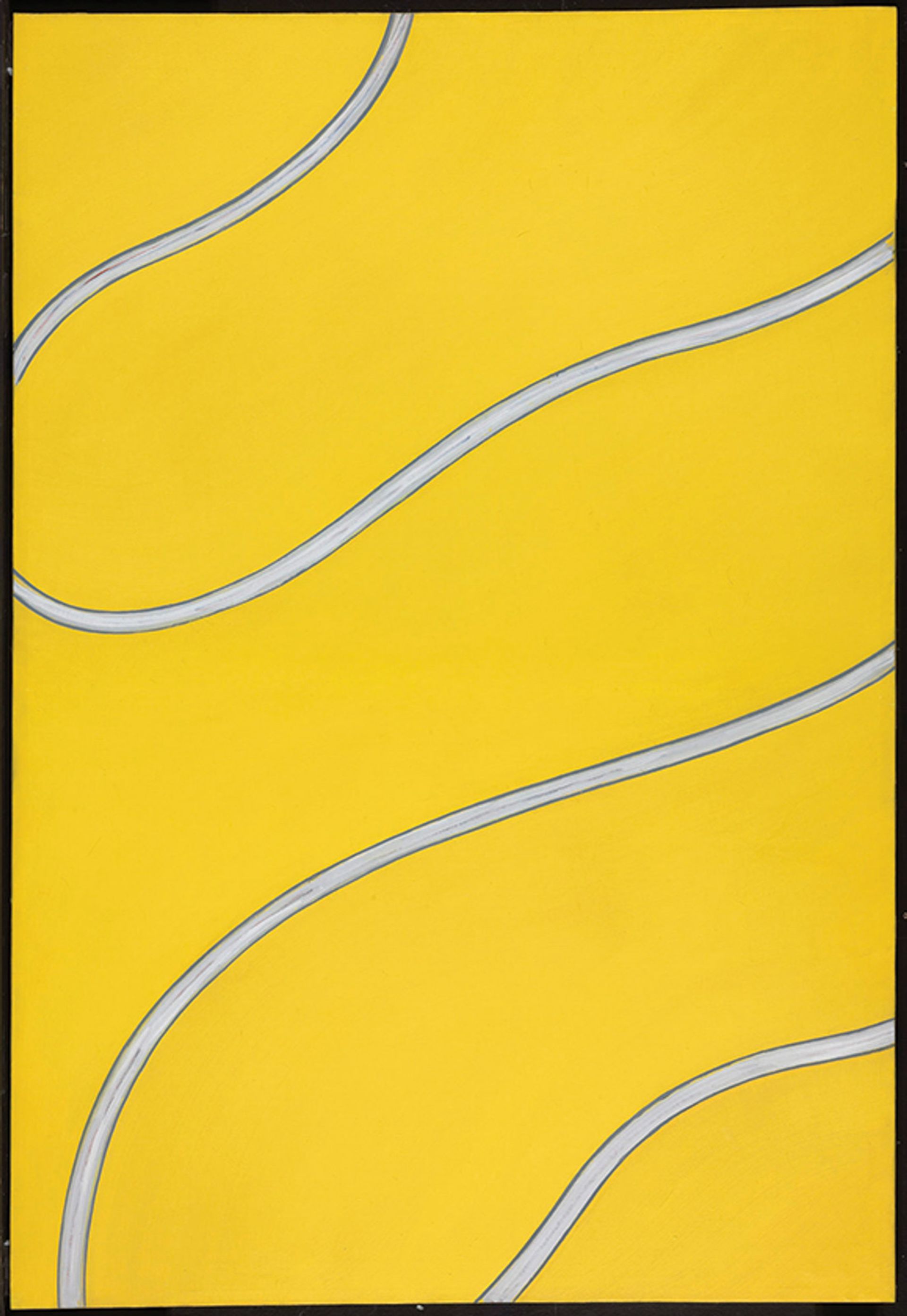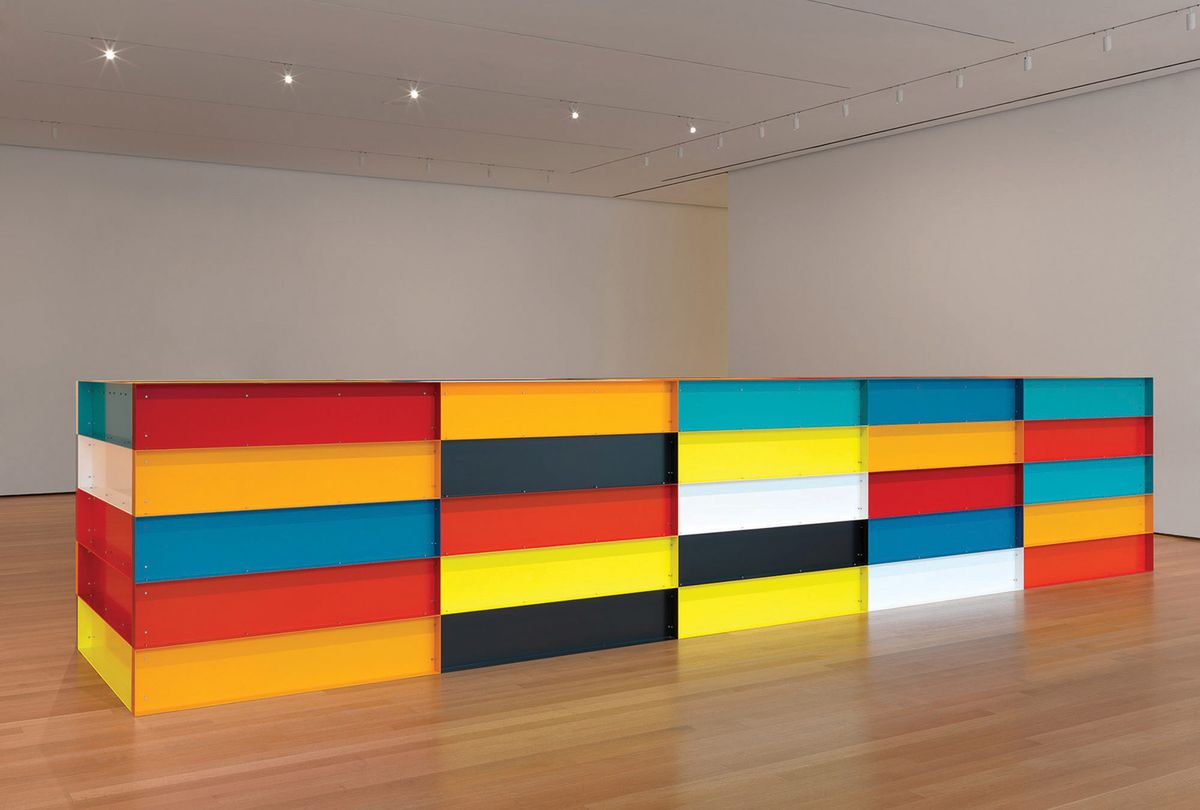One of the most common misconceptions about Donald Judd’s art is that it is relatively simple—in essence, a wholly consistent progression of sculptures of geometric stacks, boxes and furniture. Ann Temkin, the chief curator of painting and sculpture at the Museum of Modern Art (MoMA), has set out to rectify that in a new exhibition simply titled Judd, which argues that the artist’s oeuvre is in fact strikingly experimental and subject to change as well as continuity.
“I like to think there’s a specific kind of artist who thrives on setting [themselves] a very narrow set of parameters and then uses that narrow set to prove how wildly imaginative [they] can be,” Temkin says. “There is a great deal of development and change during the course of the career, and one might apply the word ‘difference’ much more than the word ‘sameness’ to [Judd’s] body of work.”
The exhibition is the first survey of Judd’s work to be organised in the US in more than three decades, and features 70 works dating from 1960 to 1992. The exhibition opens with two flat untitled paintings from 1960 and 1961, made just before a pivotal turning point in his art. By 1962, Judd’s paintings were encompassing three-dimensional objects, and later that year he produced a freestanding wooden sculpture in cadmium red to which a black metal pipe was affixed. Soon he was fashioning stacks of rectangular lacquered modules that project from the wall.

A Judd 1967 lacquered iron work © Judd Foundation/Artists Rights Society (ARS), New York
Judd wanted no association with the history of sculpture’s romantic portrayals
Judd always resisted referring to his art as sculpture. “He insisted on setting himself apart, and he wanted no association with the history of sculpture’s heroic and romantic portrayals,” Temkin says. He also eschewed titles for his works, to emphasise that “the work was there for itself, and did not refer to anything in our world in a metaphysical or symbolic way,” she adds.
The second gallery presents another turning point: having embraced iron and aluminium, the artist had the revelation in 1964 that he could pay sheet metal workers to fabricate his works in a workshop and reserve his loft as an environment for conceptualising his works. Thus began three decades of sketching out his specifications for fabricators of his wooden, aluminium or plexiglass boxes, stacks, furniture and other forms; many of these sketches are included in the show.
Although Judd designed and commissioned multiple iterations of his forms, the exhibition demonstrates that he continually changed the dimensions of the works as well as the materials. “Only when you see a large group of them like this do you understand the actual variety of factors that make up any given piece,” Temkin says.

A painting from 1960, just before Judd turned to sculpture © Judd Foundation/Artists Rights Society (ARS), New York
The exhibition also recounts Judd’s move in the 1970s to the wide open spaces of Marfa, Texas, which signified another major shift in his output as he started to move towards working on an architectural scale. MoMA has borrowed many works from the Judd Foundation and the Chinati Foundation, the museum that Judd founded in Marfa. And in a reflection of his lifelong appetite for change, the final gallery of the show will chronicle Judd’s adoption of another home in Switzerland, in the 1980s, where he discovered metal fabricators who produced his forms in a multitude of colours in powder-coated aluminium.
The exhibition is sponsored by Hyundai Card, with support from the Henry Luce Foundation.
• Judd, Museum of Modern Art, New York, 1 March-11 July


